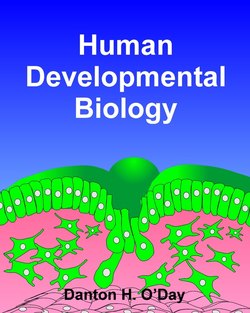Читать книгу Human Developmental Biology - Danton Inc. O'Day - Страница 18
Sequence of Events in Oogenesis
ОглавлениеAfter migrating into the gonadal ridge (female genital ridge) the primordial germ cells become oogonia (sing. oogonium) (Figure 3.4). Oogonia are the primary source of future eggs but they only undergo mitosis in the embryo producing about seven million potential eggs. In females, germ cells (oogonia) typically undergo a total of ~24 cell divisions. In males, the germline cells (spermatogonia) divide continuously throughout life. The sequence of events in oogenesis is summarized in point form after Figure 3.4. These points will be detailed later in this and subsequent chapters.
Figure 3.4. The sequence of events in oogenesis.
Here are the stages of oogenesis in point form:
•Primordial germ cells migrate into the gonadal ridge.
•Each PGC becomes an oogonium.
•Oogonia multiply by mitosis.
•Oogonia then enter a phase of growth and differentiation.
•Primary oocytes grow and specialize.
•The nucleus of oocytes is called a germinal vesicle.
•Meiosis I generates a secondary oocyte plus a polar body.
•Meiosis II produces mature ovum plus a polar body.
Meiosis is not a continuous process because it starts and stops at specific times. Two meiotic blocks occur during meiosis in oogenesis. The first occurs at prophase I while the second occurs at metaphase II. The significance of this will be detailed in future chapters.
